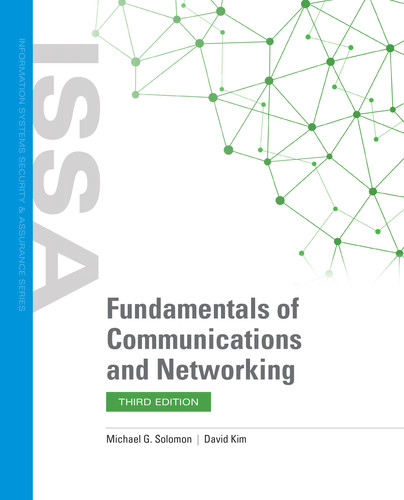CHAPTER SUMMARY
The TCP/IP protocols make the Internet possible. These two protocols have matured since their introduction more than 40 years ago. General network growth created a demand for standards and easy methods to connect networks with one another. As the demand for global connectivity increased, the Internet emerged as the most flexible and dependable infrastructure. The Internet powers today’s organizations.
In this chapter you learned about the details of the Internet Protocol, how it supports interconnected networks, and the two current IP addressing options. You also read about TCP and how it provides services for upper layer protocols. Finally, you learned about the differences between connectionless and connection-oriented protocols.
KEY CONCEPTS AND TERMS
CHAPTER 5 ASSESSMENT
- A router operates at which layer of the OSI model?
- Physical
- Data Link
- Network
- Transport
- Which of the following OSI Reference Model Transport Layer protocols is a connectionless protocol often used to send simple broadcast messages?
- TCP
- UDP
- IP
- PPTP
- The Internet Protocol (IP) operates at the OSI ______ Layer.
- What is the address size of IPv6 addresses?
- 32 bits
- 64 bits
- 128 bits
- 256 bits
- A connectionless protocol is faster than a connection-oriented protocol because it does not require the setup of a communication channel.
- True
- False
- What does the TTL value in an IP header contain?
- Time To Live
- Transport Translation Layer
- Transport Time Layer
- Transport Time Left
- Which class of IP network allows the fewest number of nodes in each network?
- Class A
- Class B
- Class C
- Class D
- Which of the following IPv4 addresses is routable (public)?
- 172.16.0.16
- 10.0.255.255
- 192.168.250.16
- 172.8.0.16
- How many bits are allocated for subnetwork purposes with a /24 subnet mask notation?
- 24
- 16
- 8
- 4
- Similar to how ARP works for IPv4 networks, which of the following is used for IPv6 network address resolution?
- ARP
- NDP
- SNMP
- ICMP
- Which OSI Layer 4 protocol sets up a connection before allowing hosts to communicate?
- HTTP
- TCP
- UDP
- IP
- The TCP/IP model Internet Layer corresponds to which OSI model layer?
- Data Link
- Network
- Transport
- Physical
..................Content has been hidden....................
You can't read the all page of ebook, please click here login for view all page.
